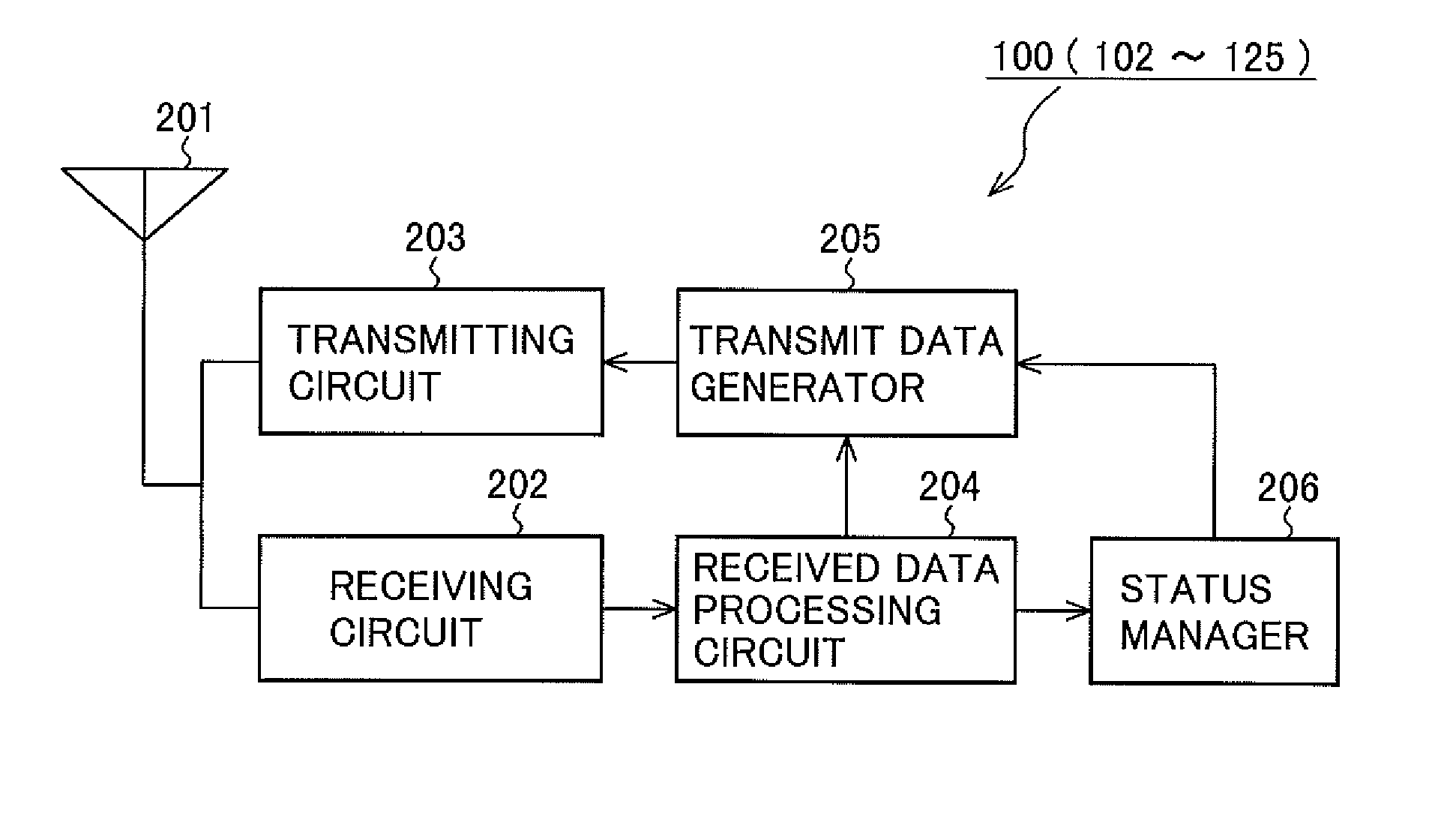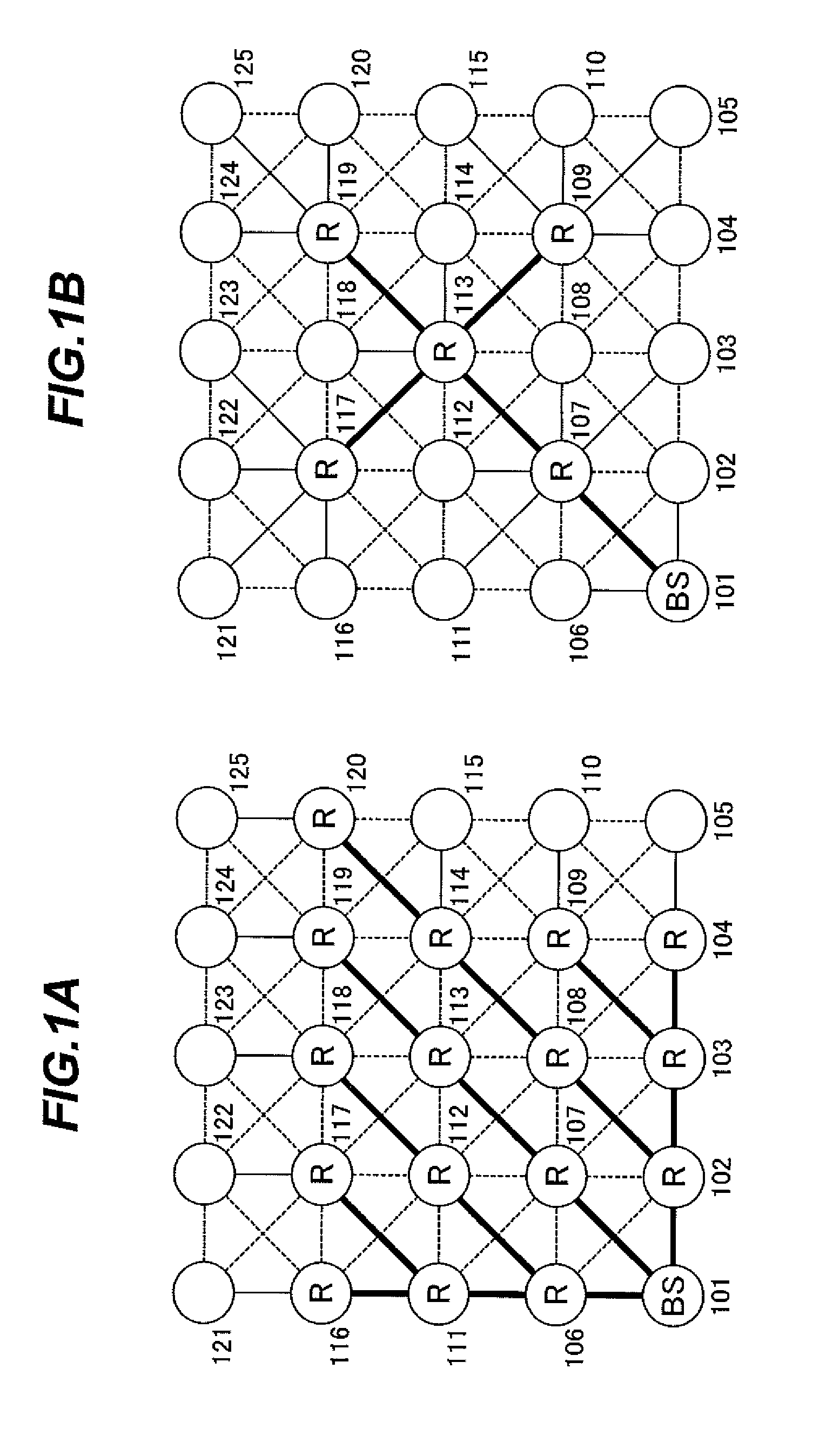Wireless network and terminal, and network configuration method and device
a wireless network and terminal technology, applied in the field of wireless networks, can solve the problems of increasing power consumption at the nodes, constant power consumption of the receiving component, and inability to change the role of each wireless terminal (relaying or non-relaying), and achieve the effect of reducing the overall power consumption of the wireless network
- Summary
- Abstract
- Description
- Claims
- Application Information
AI Technical Summary
Benefits of technology
Problems solved by technology
Method used
Image
Examples
first embodiment
[0035]In the first embodiment, the wireless terminals constituting the wireless network configure the network by executing a parent terminal decision program installed in each wireless terminal. The wireless network in this embodiment may be any type of wireless multi-hop network that can operate with a tree topology. A particular example is a sensor network.
[0036]FIGS. 1A and 1B are two examples of wireless networks with identical numbers (twenty-five) of wireless terminals (also referred to as nodes below) 101 to 125 and identical physical layouts but different tree topologies. In both topologies wireless terminal 101 is the root node and functions as a base station (BS) through which the network is connected on a constant basis to an external network. The wireless terminals indicated by the letter R operate as relaying nodes, and are referred to as routers below. In the wireless network in FIG. 1A, there are sixteen routers 102-104, 106-109, 111-114, and 116-120. In the wireless ...
second embodiment
[0104]The wireless terminal, parent-node decision method, and wireless network in a second embodiment will now be described.
[0105]The second embodiment differs from the first embodiment in how a wireless terminal or node chooses its parent node.
[0106]In this embodiment, as in the first embodiment, each wireless terminal or node in the wireless network transmits and receives status notification data and cost notification data, as well as communication data. The only costs considered in the second embodiment, however, are the basic path and link costs, as shown in FIG. 7; there are no additional costs such as the first, second, and third added costs used in the first embodiment.
[0107]The second embodiment lets each node choose its parent node on the basis of four principles: 1) avoid choosing a node having no child node if possible; 2) prefer a node having more child nodes; 3) prefer a node having more neighboring nodes; 4) prefer a node with a smaller cost. Any procedure may be used ...
third embodiment
[0116]The wireless terminal, parent-node decision method, and wireless network in a third embodiment will now be described.
[0117]Whereas a wireless terminal chooses a single parent node in the first and second embodiments, it chooses two parent nodes in the third embodiment. One of the two parent nodes is an active parent node that is used normally, while the other is a back-up parent node that substitutes for the active parent node if a malfunction occurs at the active parent node or communication with the active parent node is lost.
[0118]The reason for choosing active and back-up parent nodes simultaneously in the third embodiment is as follows.
[0119]In the first and second embodiments, since each wireless terminal chooses only one parent node, if it loses contact with its chosen parent node for any reason, it must choose another parent node to serve as its router. The first and second embodiments minimize the number of routers, however, so there is a reduced probability that any ...
PUM
 Login to View More
Login to View More Abstract
Description
Claims
Application Information
 Login to View More
Login to View More - R&D
- Intellectual Property
- Life Sciences
- Materials
- Tech Scout
- Unparalleled Data Quality
- Higher Quality Content
- 60% Fewer Hallucinations
Browse by: Latest US Patents, China's latest patents, Technical Efficacy Thesaurus, Application Domain, Technology Topic, Popular Technical Reports.
© 2025 PatSnap. All rights reserved.Legal|Privacy policy|Modern Slavery Act Transparency Statement|Sitemap|About US| Contact US: help@patsnap.com



